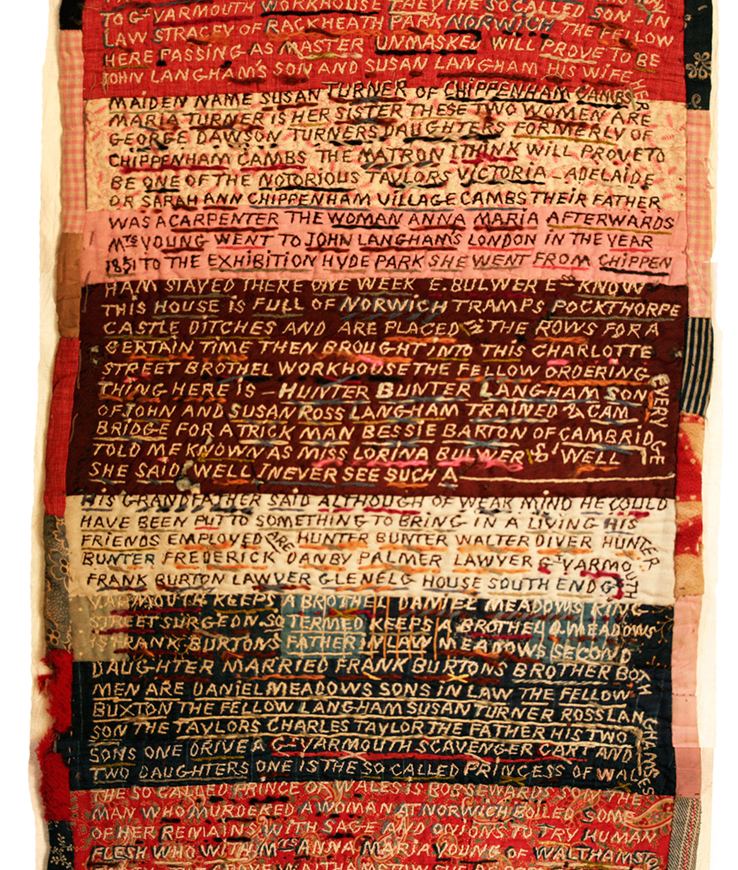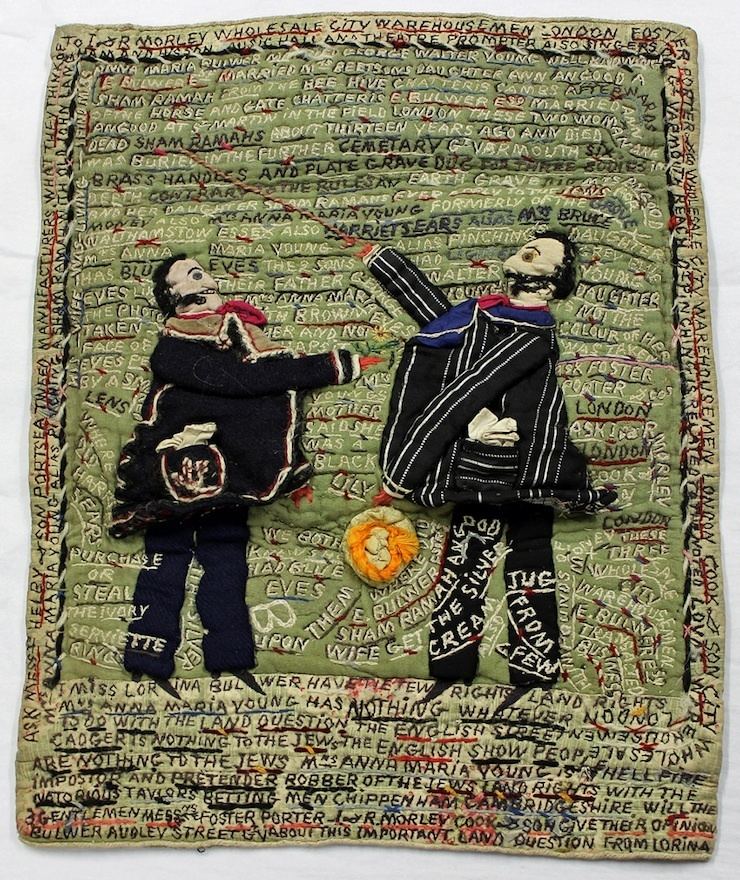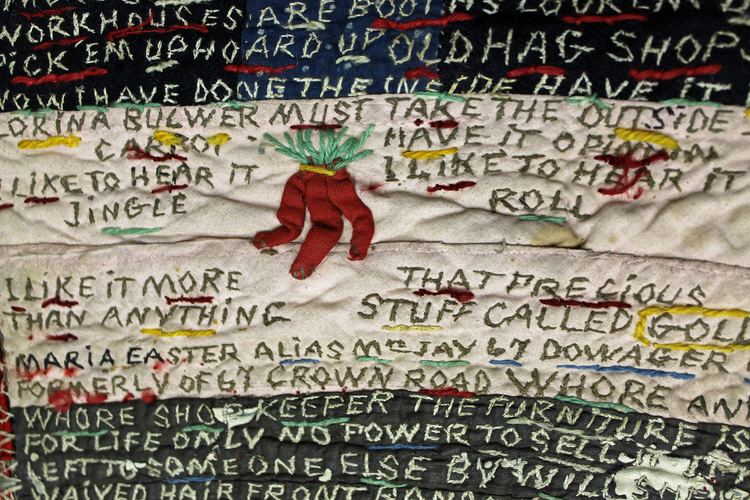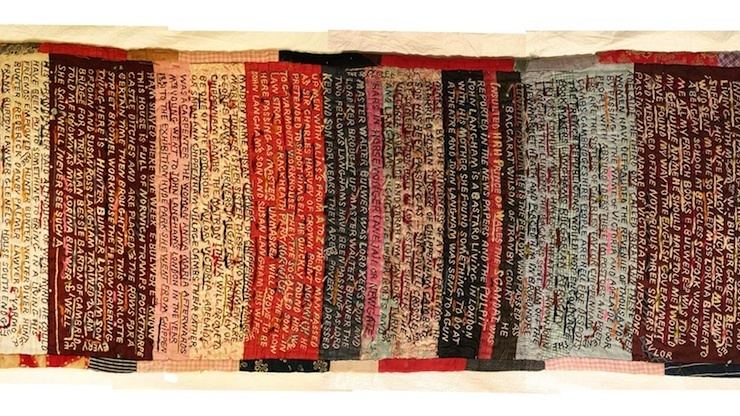Nationality British | Name Lorina Bulwer | |
 | ||
Died March 5, 1912, Great Yarmouth, United Kingdom | ||
Lorina Bulwer (1838 – 5 March 1912) was a British needleworker. She was placed in a workhouse at Great Yarmouth at the age of 55 and there she created several pieces of needlework which have featured on BBCTV and which are now in Norwich Castle Museum. The needlework are long samplers which document Bulwer's anger at her situation.
Contents

Life

Bulwer was born in 1838 in Beccles in Suffolk. Her parents were William John Bulwer and Ann (born Turner). Some time before 1861 her family moved to Great Yarmouth. Her father died in 1871 and she then worked running a guest house until her mother died in 1893. She is thought to have been placed in Great Yarmouth Workhouse by her brother Edgar shortly after and he would have paid to leave her there. The workhouse had 500 inmates, including about 60, like Lorina, who had mental disorders and were classified as "lunatics". They would have unpicked oakum for up to 10 hours a day.

Bulwer embroidered long messages that can read as a letters of protest or outrage. The material is cotton and it has been embroidered with different colour wools. One of the letters is twelve feet long and the other is 14 feet (4.3 m). The text is all in upper case and lacks any punctuation. In her rants she tries to connect her family with the Bulwer-Lyttons of Knebworth House or the Royal family or the Bulwer family of Heydon Hall. Some of the parts of her message can be verified as they refer to real people. At other points she talks about fantasies of being related to the Royal family. At other times she hints that she was sexually abused – "I MISS LORINA BULWER WAS EXAMINED BY DR PINCHING OF WALTHAMSTOW ESSEX AND FOUND TO BE A PROPERLY SHAPED FEMALE". Dr. Richard Lloyd Pinching of Walthamstow, Essex, was implicated in the sexual abuse of a fourteen-year-old girl in early 1859, in what was then called the "Walthamstow Scandal".

Bulwer died of influenza on 5 March 1912 and she was buried close to the workhouse.
Legacy

The needlework that she created went into private ownership and at one time was for sale in the local market. One of Lorina's needleworks was sold in 2002 for just over £1800 when it was thought it might have been made by Rosina Bulwer Lytton about her husband. Lorina's work is now in Norwich Castle Museum where the curators refer to her work as "Lorina". The museum bought the first part of her needlework in 2004. It was later discovered that there was a similar embroidery by Bulwer in the Thackray Museum that was dated to be two years later than the first. It was possible to date the embroideries as Bulwer made references to real events like the death of a fellow inmate.

The Dr Pinching of Walthamstow referred to in the embroideries was initially thought to be untraceable, but his story was finally uncovered in 2015 by genealogist Penelope Hemingway. Dr Pinching was involved in a court case where a man he was tending too was alleged to have torn up his will and Pinching's account was questioned. During this investigation he explained the circumstance which had happened before he resigned from the Infant Orphan Asylum in Walthamstow in 1859. He said that he had written letters to a "15 year old girl" and then he had been asked by the family to seduce her as he said he was the "family's intimate friend". No charges were brought against him when he resigned.
Bulwer's needlework was discussed during series 36 of the Antiques Roadshow and later they were featured in a spin-off programme called Antiques Roadshow Detective. Lorina and her needle-craft was the main feature of a BBC programme that investigated the story behind the textiles and the artist who created them.
A third sampler by Bulwer was discovered where it had been abandoned in an attic in County Durham. The largest piece found was two metres in length and when discovered it was identified very rapidly by an internet search for "Lorina Bulwer". This search revealed all the publicity that surrounded the re-discovery of the first two letters/samplers. The discoverers were placed in contact with Norwich museum and funding was obtained to also bring this work into the collection where it was exhibited in 2014.
